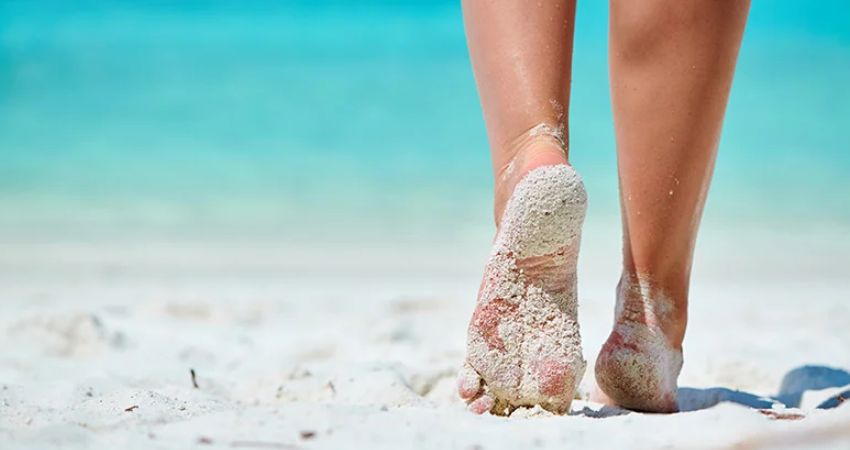Sand fleas are tiny skin parasites that burrow into feet/legs and cause painful, itchy lesions in people visiting tropical sandy regions. They are difficult to see and require proper removal and treatment. The burrowed fleas swell up with eggs inside the skin, growing to about the size of a pea. They do not jump or fly, but get transported around in soil and spread through animal hosts like pigs, dogs, cats, and rodents. The flea larvae hatch from eggs in the soil and develop into adults in about 1-2 weeks time before emerging to find a new host. The full life cycle requires warm, sandy conditions.
Treatment involves carefully removing the fleas and applying antiseptics. Oral antibiotics may be needed for secondary infections. Prevention focuses on protective footwear and avoiding areas wildlife may transport fleas.
Scope of the Problem
Sand fleas pose a major public health concern in tropical developing countries. One study estimates that there are currently 50-100 million cases of sand flea disease globally. Another study suggests at least 132 million people in South America could be at risk. Sand flea infestation is associated with poverty and poor sanitation. Without treatment, the wounds can lead to secondary bacterial infections resulting in cellulitis, gangrene, tetanus, and amputations.
Hotspots & Statistics
Brazil suffers widespread problems with sand fleas. One survey in northwestern Brazil found 68% of residents to be currently infested with a mean of 12 sand fleas per person. Other South American countries with sand flea issues include Colombia and Venezuela. In Africa, sand flea prevalence ranges from 20% to 80% in some communities. A study in rural Nigeria found 50% of school children to be infested.
Life Cycle & Behavior
The sand flea life cycle begins when the female burrows head-first into the skin and exposes her abdomen in order to breathe and expel eggs, of which she may lay 40-50 per day up to a couple weeks. The larvae then hatch and drop to the ground where they pupate in warm, sandy soil. After 5-7 days, the larvae emerge as adult fleas, ready to find a host and repeat the cycle. Humans are just incidental hosts to sand fleas, which normally develop in domestic animals like pigs, dogs, and cats as well as wild rodents.
Treatment & Prevention
The first step in treatment involves carefully removing the embedded fleas with a sterile needle. Antiseptics are then applied before finally bandaging the sore. Oral antibiotic therapy may also be prescribed if secondary infection occurs. Simple prevention strategies focus on protective footwear and avoiding sandy areas with animal hosts. Community-wide control measures involve treating domestic animals, spraying to kill eggs/larvae in soil, and improving sanitation like paved roads and floors.
Conclusion
Sand fleas remain a problematic issue for many people around the world, especially in tropical developing regions. Better surveillance and reporting of infestation rates is still needed globally. While eradication is difficult, the combination of medical treatment, preventative footwear/behaviors, and community control programs can help reduce the rates and impacts of sand flea disease over time.
FAQs
Q: How do sand fleas spread?
A: They do not jump or fly. Sand fleas spread through soil containing eggs and larvae. Newly emerged adult fleas then seek a host to begin the biting cycle again.
Q: Can I bring sand fleas back from vacation?
A: Yes, it’s possible to be infested in a sandy tropical location and not notice until returning home when the infections worsen. Seek medical care right away if you develop sores after traveling.
Q: Do sand fleas spread disease?
A: They can indirectly by causing secondary infections in the skin wounds they create. However sand fleas themselves do not inject any infectious disease agents. The main harm is through biting, eggs, and burrowing activity.
Q: Are sand fleas found in the US?
A: Yes but they are very rare and not endemic. Occasional cases occur in southern states like Florida and Texas near beaches where suitcases or animals may transport them from tropical regions.







